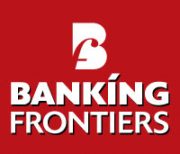bank.sbi is the new address for State Bank of India on the web. It has acquired this highest domain protocol, called generic Top Level Domain, or gTLD recently and became the first bank in the country to have such a web address
 State Bank of India has a new web address – bank.sbi. It is part of the bank’s efforts in rebranding its corporate website. What is unique about this url is that it is the highest domain protocol, called generic Top Level Domain, or gTLD. This protocol allows an organization to use its corporate name – in this case sbi – as the .extension and the website’s top level identifier rather than the usual .com or .co.in. The bank is the first financial services institution in India to use a gTLD as its web address. Besides, the branding, the domain is expected to provide enhanced security as well to its customers.
State Bank of India has a new web address – bank.sbi. It is part of the bank’s efforts in rebranding its corporate website. What is unique about this url is that it is the highest domain protocol, called generic Top Level Domain, or gTLD. This protocol allows an organization to use its corporate name – in this case sbi – as the .extension and the website’s top level identifier rather than the usual .com or .co.in. The bank is the first financial services institution in India to use a gTLD as its web address. Besides, the branding, the domain is expected to provide enhanced security as well to its customers.
The bank said its own gTLD is aimed at simplifying the digital experience of customers and brings in enhanced security against phishing and lookalike websites. A gTLD site is non-replicable and the extension conveys an assurance to the customer that the site is authorized, genuine and is not an inappropriate or phishing site.
SECURITY
Arundhati Bhattacharya, chairman of the bank, said the bank has always been a pioneer in adapting new technology and it has always believed in providing high-tech yet secure internet experience to its customers. Adopting gTLD is another step in this direction, she added. The bank now intends to convert all its internet presence into gTLD.
DOMAIN NAMES
What are the intricacies in domain name registrations? The original top level domains were .com (administered by Verisign), .org. (by Public Interest Registry), .net (by Verisign), .int (by Internet Assigned Numbers Authority), .edu (by Educause via Verisign), .gov (by General Services Administration via Verisign) and .mil which is US military. In addition, there are country specific code top-level domains, like .in, .ae, .fr, etc. The Internet Corporation for Assigned Names and Number (ICANN), which is a Los Angeles-based non-profit group that oversees the distribution of domain names, had in 2000, approved 7 gTLDs – .biz, restricted to businesses; .info, open to anyone; .name, for personal registrations; .pro, for licensed professionals such as lawyers, doctors and accountants; .aero, for anything related to air transport; .museum, for museums; and .coop, for cooperative businesses such as credit unions. It had also approved several organizations to register domain names for individuals and businesses.
2 CATEGORIES
In fact, generic TLDs are in two categories: sponsored and non-sponsored. To obtain an internet address with a sponsored TLD, certain requirements must be fulfilled. These conditions are determined by the sponsors (companies or organizations) that are also responsible for monitoring guidelines and general management of their TLD. Some examples of sponsored domain extensions are .gov (for US government institutions), .int (for international organizations), and .jobs (for company job offers). The non-sponsored TLDs, on the other hand, are monitored and managed centrally. ICANN is primarily responsible for these and works together with various partners. When the first non-sponsored TLDs were introduced, it was originally planned for them only to be purchased under certain conditions. Like sponsored gTLDs, they should denote a clear frame of reference for websites: .com was initially only available for companies, .net was intended for internet service providers, and .pro for professional use in various occupations. These plans, however, were gradually dropped and now almost every non-sponsored gTLD is available for individuals, businesses, organizations, etc. to use.
Click here for online subscription to read all the articles in full







